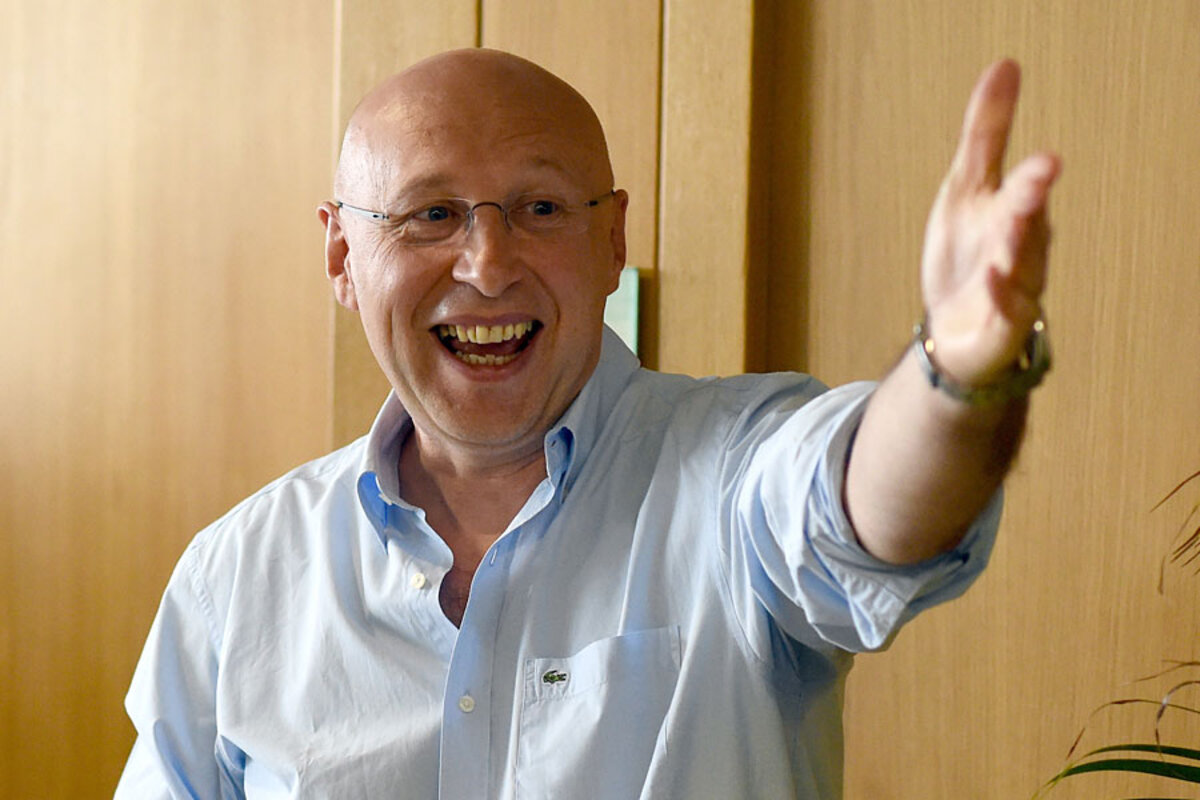Three scientists awarded Nobel for building a better microscope
Loading...
This year's Nobel Prize in Chemistry has been awarded to three scientists for developing a microscopy method that could reach the nanodimension and reveal the inner workings of living cells at work, the Royal Swedish Academy of Sciences announced today (Oct. 8).
The work of the Nobel Laureates, Eric Betzig, Stefan W. Hell and William E. Moerner, was "groundbreaking," according to the Swedish Academy, as it surpassed what was thought to be a physical limit in . In 1873, microscopist Ernst Abbe said light microscopes could never visualize with any resolution anything smaller than 0.2 micrometers, or half the wavelength of light. For comparison, an E. coli bacterial cell is about 3 micrometers long, while the influenza virus is 0.13 micrometers (130 nanometers), and the hemoglobin inside red blood cells is just 0.006 micrometers (6.5 nm) in size, according to the University of Utah's Genetic Science Learning Center.
Because of the trio's achievements, scientists can now use light microscopy that relies on fluorescent molecules to peer into the nanoworld, or objects (and living things) that are on the order of just billionths of a meter in size. []
In 2000, Hell developed what is called stimulated emission depletion (STED) microscopy, in which one laser beam makes fluorescent molecules glow and another "cancels out all fluorescence except for that in a nanometer-sized volume," according to . The result is a resolution greater than that put forth by Abbe's calculation.
Working separately, Betzig and Moerner came up with single-molecule microscopy, which images the same area of a sample several times, letting just a few molecules glow each time. By superimposing these images, the method can produce a super-image with nanolevel resolution. Betzig used the method for the first time in 2006.
Asked today how he felt when he received the call from Staffan Normark, permanent secretary of the Royal Swedish Academy of Sciences, about his award, Hell said, "I was totally surprised. I couldn't believe it." Hell added that he then recognized the voice of Normark and so knew the call was real.
Betzig is now at the Janelia Farm Research Campus, Howard Hughes Medical Institute in Ashburn, Virginia; Hell is at the Max Planck Institute for Biophysical Chemistry, Göttingen, and German Cancer Research Center, Heidelberg; and Moerner is at Stanford University.
The three scientists will split this year's Nobel Prize amount of 8 Swedish Krona or $1.1 million.
So far this week, the Academy has awarded the Nobel Prize in Medicine for the discovery of the brain's "inner GPS," the Nobel Prize in Physics for the invention of blue LEDs, and now . The Academy will announce the Nobel Prize in Literature tomorrow (Oct. 9) at 7 a.m. EDT (1 p.m. local time in Sweden) at the earliest, the Nobel Peace Prize on Friday (Oct. 10) at 5:00 a.m. EDT (11 a.m. local time in Sweden) at the earliest, and the Sveriges Riksbank Prize in Economic Sciences on Monday (Oct. 13) at 7:00 a.m. EDT (1 p.m. local time in Sweden) at the earliest. You can of the announcements.
Follow us ,����&������;��. Original article on .
Copyright 2014 , a TechMediaNetwork company. All rights reserved. This material may not be published, broadcast, rewritten or redistributed.




